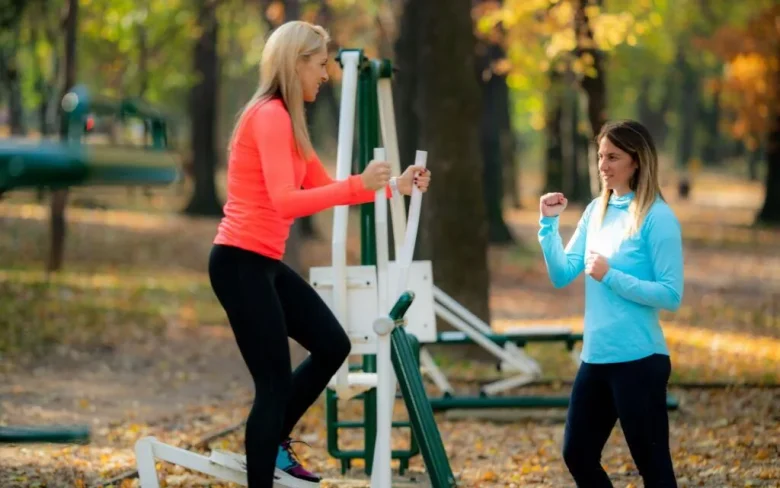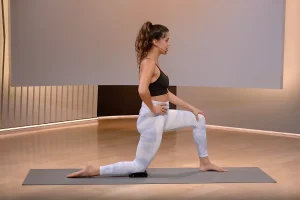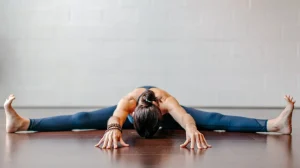The benefits of exercising outdoors are vastly different from those of exercising indoors. Breathing fresh air, enjoying the sun, and being in nature allow you to fully relax, improve your mood, and relieve stress. Exercising outdoors typically exposes you to diverse terrain, something treadmills or stationary bikes can’t match. Walking, running, or cycling in a park not only improves cardiovascular health but also strengthens muscles and joints. Outdoor activities increase your activity level, stimulate your senses, and make exercise a thrilling adventure rather than a chore.
Walking and Hiking in Nature
Walking is an easy and convenient way to enjoy outdoor activities. It’s accessible to everyone, regardless of fitness level. All you need are comfortable shoes. If you’re looking for a more challenging workout, walking is an excellent option for strengthening your leg muscles, improving your endurance, and exploring nature trails. Hills, rugged terrain, and varying elevations exercise many muscle groups, improve balance, and enhance cardiovascular health. Walking also allows you to connect with nature, which is beneficial for both your physical and mental well-being.
Cycling: Fun and Health
Cycling is another fun and healthy outdoor activity. Whether you ride a regular bike or an electric bike, you can strengthen your lower body, promote heart health, and improve joint flexibility. This type of exercise is low-impact, making it suitable for people of all ages and those with excellent fitness levels. Cycling through beautiful landscapes or with family and friends adds social enjoyment and makes the workout more enjoyable. Regular cycling is an excellent way to get some dynamic exercise outdoors, as it improves your endurance, strengthens your leg muscles, and burns a significant number of calories.
Running and Jogging Outdoors
Besides breathing fresh air and enjoying beautiful scenery, running and jogging outdoors are beneficial for your heart health and improving your physical fitness. Running on grass, paths, or uneven surfaces trains the muscles that help maintain your body’s stability, improving your balance and agility. Running outdoors is more enjoyable than running on a treadmill, which helps maintain your motivation. Beginners can start by walking or jogging. Over time, they can gradually increase the distance and intensity. Running outdoors is an excellent way to stay in shape because it improves your cardiovascular fitness, strengthens your muscles, and keeps your mind clear.
Bodyweight Training in Parks and Other Open Spaces
You can do bodyweight exercises like push-ups, squats, lunges, and planks anywhere, but parks and other open spaces are particularly suitable. These exercises work large muscle groups and can be combined into circuit training for a full-body workout. Using props like park benches, branches, or grass to vary the exercises can make them more fun and challenging. Outdoor bodyweight training works more muscles, builds strength, and provides a greater sense of freedom than training in a gym. Outdoor sports facilities are easily accessible and suitable for people of all fitness levels.
Exercise, Fitness, and Making New Friends
Playing sports like soccer, basketball, tennis, or volleyball outdoors is a fantastic way to get some exercise, make new friends, and have fun. Team sports improve coordination, agility, and cardiovascular endurance, while strengthening bonds and fostering a healthy competitive spirit. Outdoor athletes have the freedom to move and adapt to different environments and movements, which is beneficial for their overall health. Exercise can also fuel enthusiasm for sports, making it less of a chore and more of a pleasure. This process helps people maintain an active lifestyle in the long run.
Practicing Mindfulness
High-intensity exercise isn’t the only way to exercise outdoors. Yoga, tai chi, and stretching exercises in your garden or park can help you move more mindfully, improve your flexibility, and relax your mind and body. These activities help you better understand your body, reduce stress, and maintain healthy muscles and joints. People who practise mindfulness outdoors feel connected to nature, breathe fresh air, and focus on their movements in a peaceful environment. By combining these activities with more intense workouts, you can create a comprehensive fitness plan.
Making Exercise a Routine Outdoors
To stay healthy and vital and enjoy time outdoors, consistency is essential. Incorporating various activities into your daily life, such as walking, running, cycling, playing sports, and bodyweight training, improves your overall fitness and makes your workouts more enjoyable. Choosing a suitable time for outdoor activities, such as early morning or evening, helps you stick to your workout. Mixing up fun activities, like exploring new parks or hiking trails, keeps you motivated and makes exercise a pleasurable experience rather than something you have to do. A well-designed workout plan helps people maintain an active and healthy lifestyle in the long run.
Tracking Progress and Setting Goals
Documenting your progress can keep you motivated and encourage you to keep improving. You can use fitness trackers, mobile apps, or simple notebooks to track your distance, time, and repetitions. Setting achievable goals, such as completing a longer walk, cycling a specific route, or mastering a new yoga pose, can give you direction and a sense of accomplishment. Tracking your progress not only motivates you but also helps you identify areas for improvement. This way, your outdoor workouts remain effective and enjoyable in the long run.
Conclusion
Outdoor exercise is a fun and flexible way to stay healthy and energetic and improve your overall well-being. Walking, hiking, running, cycling, bodyweight training, and various other sports are all beneficial for your heart, muscles, and mental health. Mindfulness-based training techniques can further improve flexibility, relax the mind and body, and reduce stress. Setting goals, sticking to them, and trying new outdoor activities can help you develop a fitness plan that works for you. Outdoor exercise improves your physical health and allows you to build a deeper connection with nature and encourages a more active and happy lifestyle.
FAQs
1. What are some simple outdoor exercises?
For beginners, simple exercises like walking, jogging, cycling, and exercises like push-ups and squats are excellent starting points.
2. Is exercising outdoors better than exercising indoors?
Exercising outdoors is just as good for your health as exercising indoors, and it’s even better for your mental health because you can enjoy fresh air and sunlight and reduce stress.
3. How often should I exercise outdoors to stay fit?
Aim for at least three to five different types of exercise per week to improve your heart health, build strength, and increase your flexibility.
4. Does exercising outdoors help with weight loss?
Yes, sports like soccer, tennis, and basketball can help with weight management because they burn calories, improve physical fitness, and extend the lifespan of your cardiovascular system.
5. Is it safe to exercise outdoors in adverse weather?
Extreme heat or cold can reduce your motivation to exercise. Take precautions, such as staying hydrated, wearing appropriate clothing, and planning your workouts during cooler weather.
6. Is exercising outdoors good for your mental health?
Absolutely. Being outdoors can reduce anxiety, improve your mood, and boost your energy—all benefits for your mental health.




